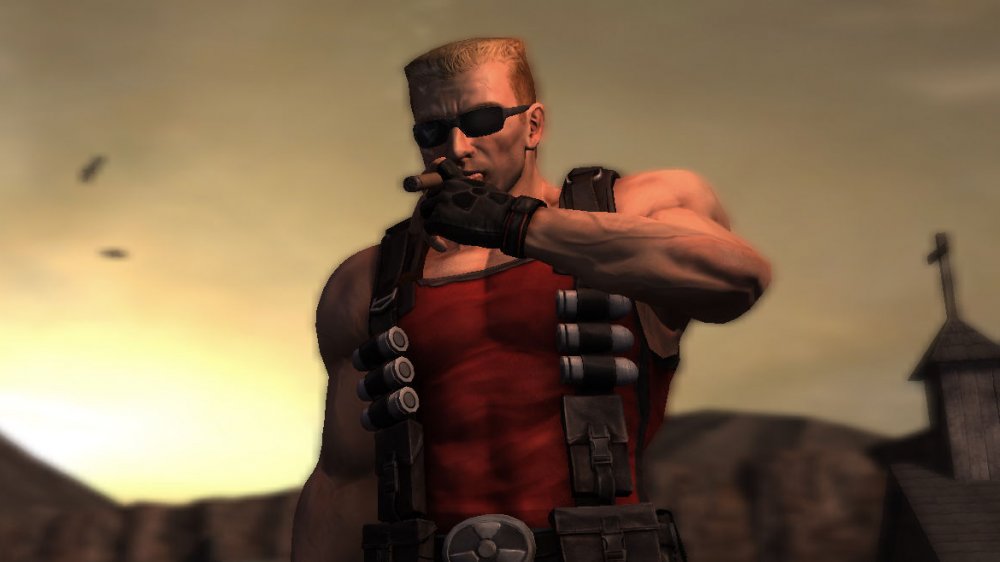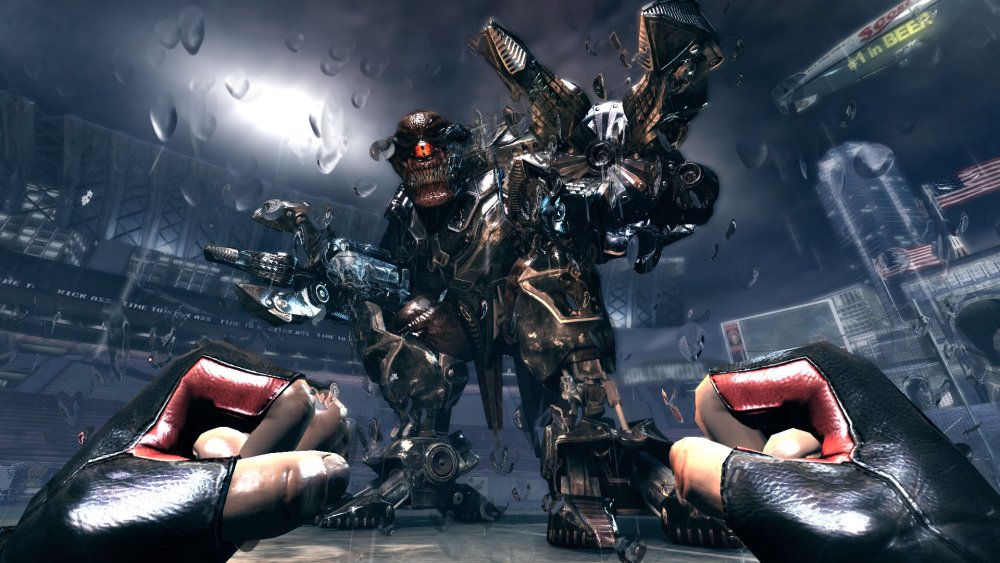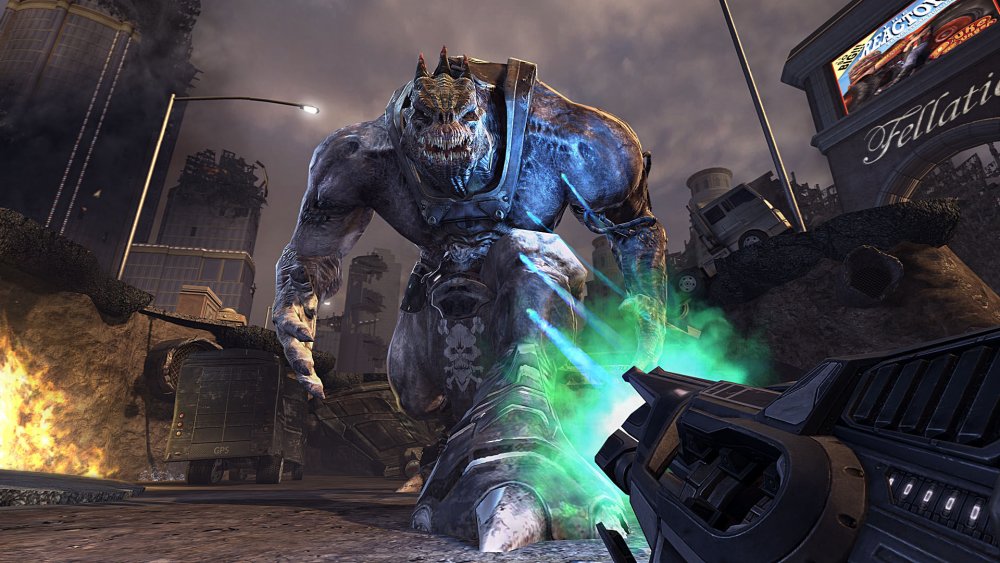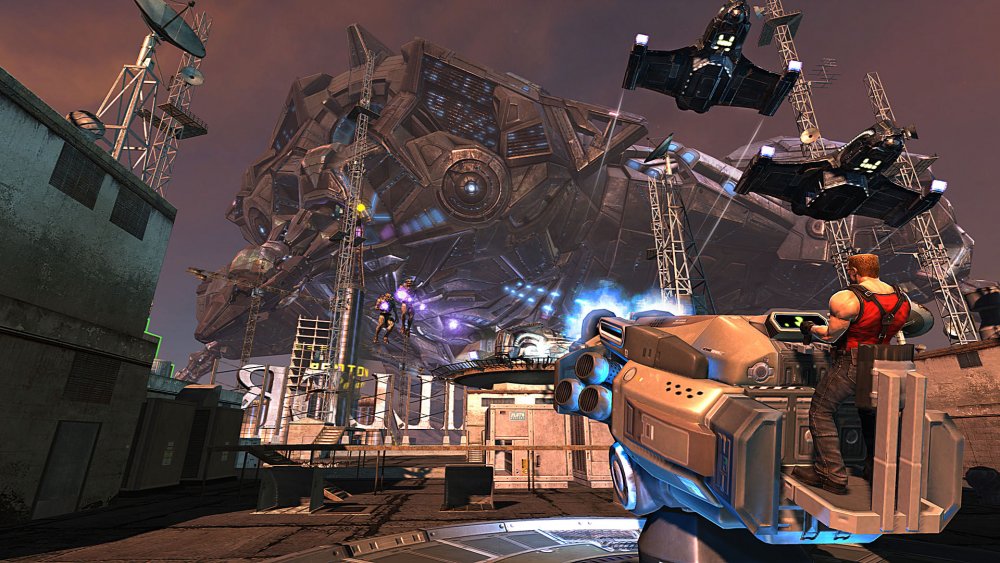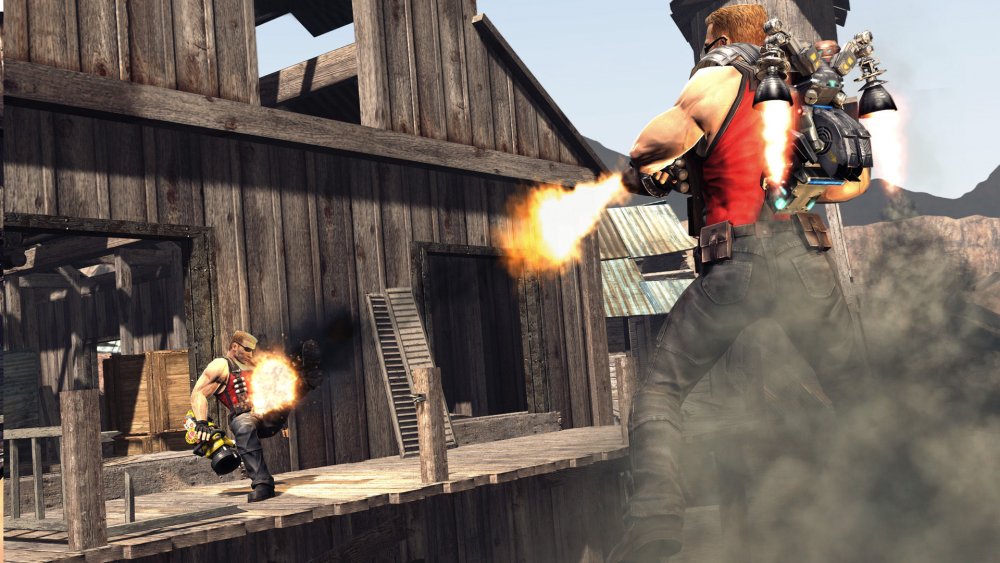This Game Took 15 Years To Develop. Here's Why.
In the immortal words of Shigeru Miyamoto, "A delayed game is eventually good, but a rushed game is forever bad." Depending on who you ask, Duke Nukem Forever marks the exception to that rule.
When players discuss video games that underwent development hell, Duke Nukem Forever likely comes to mind. The game languished through 15 years of production, yet for all of its struggles only received middling reviews. So, why did it take the developers 15 years to launch the game? Well, the devil is in the details.
The tale of Duke Nukem Forever demonstrates the unfortunate truths and pitfalls of modern game development — and how questionable decisions and mindsets can snowball out of control. Nevertheless, Duke Nukem Forever's release is nothing short of a miracle. Here's a look at went wrong, and why Duke Nukem Forever moldered in development for over a decade.
Multiple engine swaps
3D Realms announced Duke Nukem Forever way back in 1997. Since it wanted to be on the cutting edge at that time, the company turned to the Quake 2 Engine. However, the engine wasn't ready for prime time, so the studio leveraged the existing Quake Engine as well, and used it to mock up early screenshots. Despite this, 3D Realms didn't really start working on Duke Nukem Forever until it received the Quake 2 code in 1998.
However, the Quake 2 train didn't last. After showing Duke Nukem Forever footage during E3 1998, 3D Realms made yet another swap, this time to the Unreal Engine. Despite designer George Broussard insisting that transferring work between engines would only take a few weeks to months, programmer Chris Hargrobe stated the engine swap was "effectively a reboot of the project in many respects."
While the studio actually stuck to Unreal for the rest of development, 3D Realms still lost time, money, and work on the engine switches.
Program like it's 1995 ... or not
After the switch to Unreal Engine, 3D Realms swapped publishers to Take-Two Interactive. Despite this changing of the guard, Broussard and 3D Realms' founder Scott Miller continued working with what an anonymous former employee described as a "1995 mentality."
Instead of hiring more employees, 3D Realms maintained a tiny development team of 18 full-time workers by 2003, and the company was completely self-funded. This little team partially explains why Duke Nukem Forever development progressed glacially, Moreover, since Take-Two didn't foot the bills, Broussard wasn't beholden to its demands, which led to Broussard and Take-Two butting heads. However, the biggest threat to development came from within.
In 2006, a number of employees left the 3D Realms team after low pay and constant delays prevented them from cashing in on a promise for profit-sharing. Plus, Duke Nukem Forever was the only project on many of their resumes. In 2006, Take-Two renegotiated the money they would pay to 3D Realms — and promised a cool half-a-mil if the game was released that year. Broussard turned that down, which was the final straw for many 3D Realms members.
Thanks to the exodus, the 3D Realms staff was almost cut in half, which didn't do its development schedule any favors.
Broussard calls it quits
Progress eventually picked up after 3D Realms started hiring more team members — thanks in no small part to project lead Brian Hook and his uncanny ability to say no to Broussard and his constant requests. However the honeymoon didn't last. Eventually, 3D Realms ran out of money, so Broussard and Miller swallowed their pride and asked Take-Two for an extra $6 million to finish the game. Here is where things enter "he said, she said" territory.
Broussard and Miller claim Take-Two initially agreed to provide $6 million and then reneged and only offered $2.5 million. In contrast, Take-Two alleges it only offered $2.5 million from the get-go and another $2.5 million upon completion. Whoever was correct is a matter of semantics because Broussard and Millar refused the counteroffer and washed their hands of the Duke Nukem Forever business.
Gearbox to the rescue
Even though 3D Realms didn't officially work on Duke Nukem Forever after the Take-Two funding fiasco, development still continued, but at a newer, even more sluggish pace. Several ex-employees allegedly worked part-time on the game at their homes — and later formed Triptych Games. Then Randy Pitchford entered the scene.
Surprisingly enough, Pitchford had a history with Duke Nukem Forever, since he previously worked on the project. He offered to fund the game so it could be finished, and Trpitych moved into the 10th floor office of the Gearbox Software building. The rest is video game history. Duke Nukem Forever launched June 10, 2011. Moreover, Gearbox acquired the rights to the Duke Nukem IP.
While Duke Nukem Forever didn't quite live up to expectations, you can thank Pitchford for helping provide the final fuel necessary to push it over the finish line.

